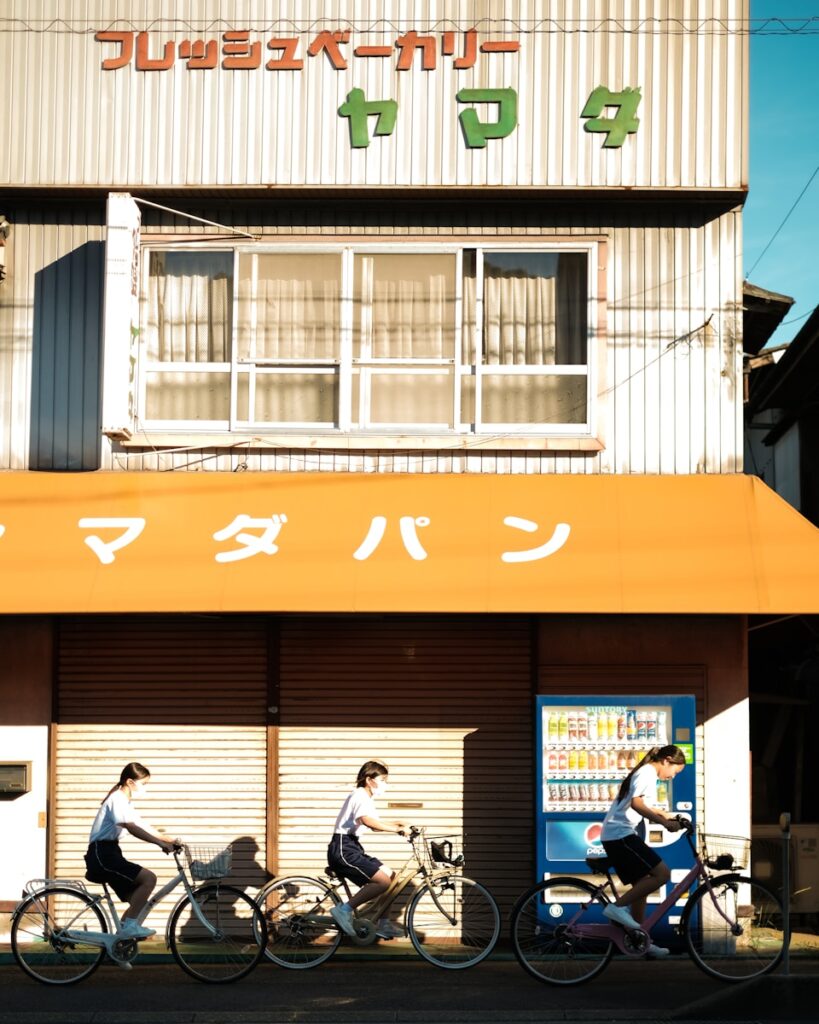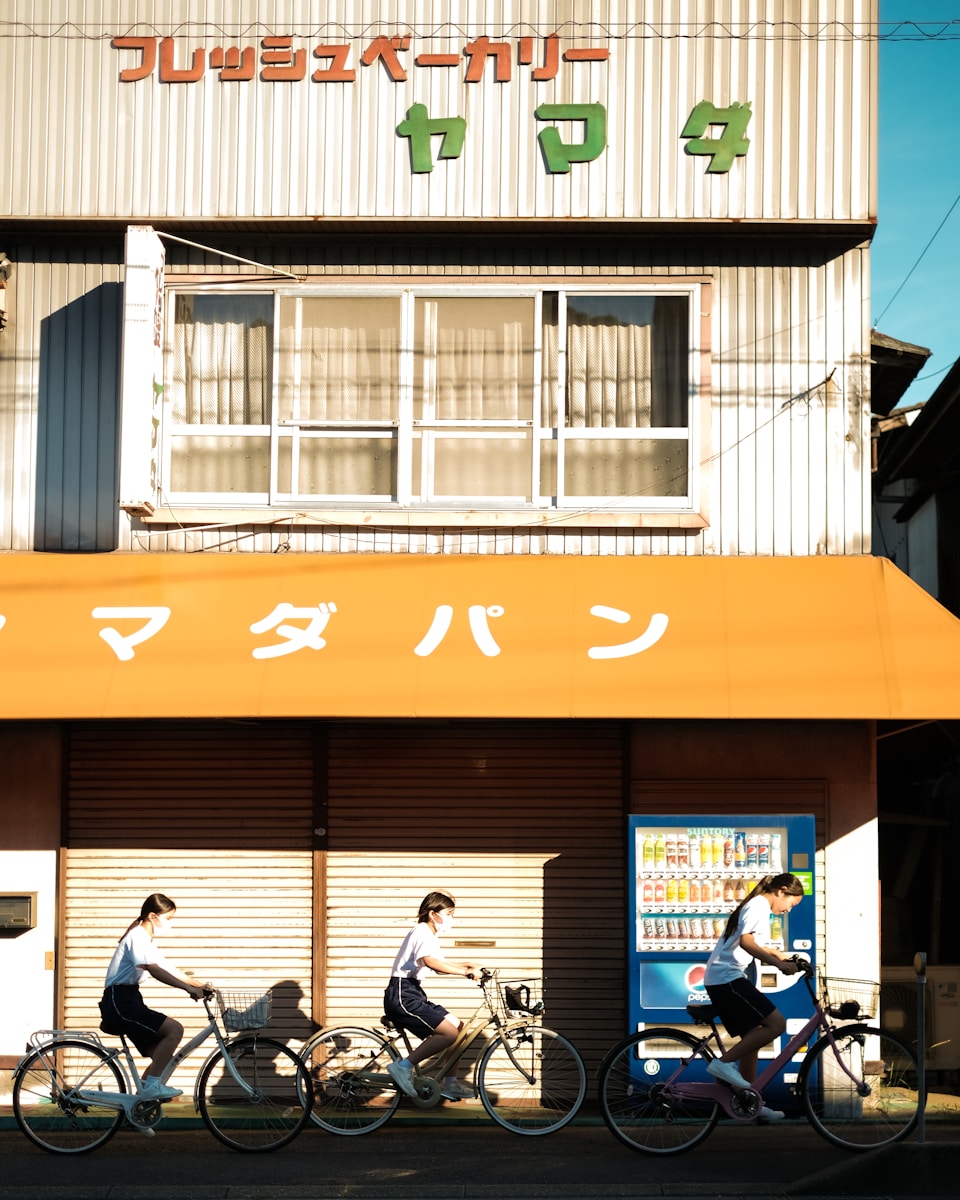Kyoto On A Bike – Is It The Best Way?
Exploring Kyoto by bicycle offers a unique and enriching way to experience this historic city. Cycling in Kyoto allows visitors to navigate through narrow streets, scenic paths, and bustling markets with ease, providing an intimate glimpse into Kyoto’s diverse cultural and natural landscapes. The benefits of cycling extend beyond mere convenience, offering environmental, health, and experiential advantages that make it a superior mode of transportation in many respects.

Table of Contents
Cycling in Kyoto presents an eco-friendly alternative to traditional transportation methods. It reduces carbon emissions, alleviates traffic congestion, and promotes sustainable tourism. Personally, cycling through Kyoto has been a transformative experience, allowing me to connect with the city in ways that are simply not possible from behind the windows of a car or bus. The freedom and flexibility of a bicycle open up a world of hidden gems and unexpected encounters.
The Appeal of Cycling in Kyoto
Environmental Benefits
Cycling is an environmentally friendly way to explore Kyoto, significantly reducing one’s carbon footprint. Unlike motor vehicles, bicycles produce no emissions, making them a sustainable choice for eco-conscious travelers. By opting to cycle, visitors contribute to the reduction of air pollution and help preserve the city’s air quality, ensuring a healthier environment for both residents and tourists.
Connecting with nature is another profound benefit of cycling. Kyoto’s natural beauty is best appreciated up close, and cycling provides an immersive experience that allows riders to engage with their surroundings fully. From the serene Kamo River to the lush forests of the outskirts, cycling offers unparalleled access to Kyoto’s diverse landscapes, making every journey a memorable adventure.
Health and Wellness
Cycling is not only beneficial for the environment but also for personal health and wellness. Physically, it provides an excellent cardiovascular workout, helping to improve overall fitness levels. Regular cycling can strengthen muscles, enhance endurance, and promote a healthy lifestyle. For travelers, incorporating cycling into their itinerary ensures they stay active while exploring new places.
Mentally, cycling offers a meditative and stress-relieving experience. The rhythmic motion and the serene surroundings can have a calming effect, reducing anxiety and promoting mental well-being. The combination of physical exertion and mental relaxation makes cycling an ideal way to rejuvenate both body and mind while enjoying the sights and sounds of Kyoto.
Best Routes for Cycling in Kyoto
Philosophers’ Path
The Philosophers’ Path is one of Kyoto’s most scenic and culturally rich cycling routes. This path, which runs alongside a canal, is particularly stunning during the cherry blossom season when the trees lining the route are in full bloom. The path offers a tranquil and picturesque journey, making it a favorite among both locals and tourists.
Key stops along the Philosophers’ Path include notable temples and shrines such as Ginkaku-ji (the Silver Pavilion) and Honen-in. These sites offer opportunities to explore Kyoto’s spiritual heritage while taking a break from cycling. Each stop provides a unique glimpse into the city’s history and culture, enhancing the overall cycling experience.
Kamo River
Cycling along the Kamo River is another excellent way to see Kyoto. The riverside paths offer a smooth and scenic ride, with beautiful views of the water and surrounding greenery. This route is especially popular for its accessibility and the peaceful ambiance it provides, making it suitable for cyclists of all skill levels.
Attractions along the Kamo River include a variety of parks and recreational areas where cyclists can rest and enjoy the scenery. Notable points of interest such as Shimogamo Shrine and the Kyoto Botanical Gardens offer cultural and natural attractions that enrich the cycling journey. These stops provide ideal photo opportunities and moments of relaxation amidst the ride.
Essential Cycling Gear and Safety Tips
Preparing for Your Ride
Preparing for a cycling adventure in Kyoto requires some essential gear to ensure a safe and comfortable ride. A good-quality bicycle, a helmet, and a lock are must-haves for any cyclist. Additionally, carrying a water bottle, a map, and a basic repair kit can be invaluable, especially for longer rides.
Bike rentals are widely available in Kyoto, with many shops offering a range of bicycles suitable for different terrains and preferences. Renting a bike is straightforward, with many rental services providing maps and recommendations for the best cycling routes. Ensuring that the rental bike is in good condition and comfortable for the rider is crucial for an enjoyable experience.
Safety Tips
Understanding local cycling regulations is essential for a safe ride. In Kyoto, cyclists are required to ride on designated paths where available and to follow the same traffic rules as motor vehicles. Wearing a helmet, using hand signals, and obeying traffic lights are all important practices for safe cycling.
Navigating traffic can be challenging, especially in busy areas. Cyclists should remain alert, maintain a safe distance from other vehicles, and avoid sudden maneuvers. Using a bell or horn to alert pedestrians and other cyclists of your presence can help prevent accidents and ensure a smooth ride through the city.
Cycling-Friendly Attractions
Temples and Shrines
Kyoto is home to numerous temples and shrines that are easily accessible by bike. Sites such as Kinkaku-ji (the Golden Pavilion) and Ryoan-ji are not only architectural marvels but also offer beautiful grounds that can be explored by bicycle. These attractions provide a cultural dimension to the cycling experience, allowing riders to delve into Kyoto’s rich spiritual heritage.
Unique features of these sites include meticulously maintained gardens, historical artifacts, and serene meditation spaces. Each temple and shrine has its own story and significance, making them intriguing stops on any cycling route. The accessibility and diversity of these sites enhance the appeal of cycling as a means to explore Kyoto.
Parks and Gardens
Kyoto’s parks and gardens are perfect for leisurely cycling. Many parks, such as the Kyoto Imperial Palace Park and Maruyama Park, have dedicated cycling paths that make for a relaxing and enjoyable ride. These green spaces offer a peaceful retreat from the city’s hustle and bustle, providing scenic spots for picnics and rest.
Scenic spots within these parks, such as picturesque ponds, seasonal flowers, and historic landmarks, offer excellent opportunities for photography and relaxation. Cycling through these gardens allows visitors to experience Kyoto’s natural beauty up close, making it a highlight of any cycling tour.
Seasonal Cycling Experiences
Spring
Spring in Kyoto is synonymous with cherry blossoms, and cycling during this season offers breathtaking views of sakura in full bloom. The best spots to view cherry blossoms while cycling include the aforementioned Philosophers’ Path and the Kamo River, where the pink blossoms create a stunning backdrop for a leisurely ride.
Spring festivals, such as the Higashiyama Hanatouro, add to the charm of cycling in Kyoto. These festivals feature illuminated pathways and cultural performances, creating a magical atmosphere. Cycling routes that pass by these festival locations offer a unique blend of cultural immersion and natural beauty.
Autumn
Autumn in Kyoto is marked by vibrant fall foliage, making it an ideal season for cycling. Prime locations for viewing autumn leaves include Arashiyama and the Kyoto Imperial Palace grounds. The rich colors of the foliage enhance the scenic beauty of these routes, providing a visually stunning experience.
Seasonal foods, such as roasted chestnuts and sweet potatoes, are popular during autumn and can be enjoyed at various street food stalls along the cycling routes. These snacks offer a taste of Kyoto’s seasonal culinary delights, adding to the overall enjoyment of the ride.
Personal Reflections on Cycling in Kyoto
Memorable Rides
My cycling adventures in Kyoto have been filled with memorable moments and beautiful discoveries. One particularly memorable ride was along the Philosophers’ Path during cherry blossom season, where the sight of the blooming sakura against the serene canal created an unforgettable experience. Another highlight was cycling through the vibrant autumn foliage in Arashiyama, where the rich colors of the leaves provided a breathtaking backdrop.
Lessons learned from these experiences include the importance of planning and flexibility. Being prepared with the right gear and having a flexible itinerary allowed for a more enjoyable and stress-free ride. Additionally, taking the time to explore and appreciate the surroundings added depth to the cycling experience.
Connecting with Kyoto
Cycling has enhanced my connection with Kyoto in profound ways. The slower pace and the ability to explore off-the-beaten-path locations have allowed for a deeper appreciation of the city’s cultural and natural beauty. The freedom to stop and explore at will has led to unexpected encounters and discoveries that would have been missed with other forms of transportation.
I highly recommend cycling to anyone visiting Kyoto. The unique perspective and the intimate connection with the city it offers are unparalleled. Whether exploring historic sites, scenic parks, or bustling markets, cycling provides an immersive and enriching way to experience Kyoto’s many charms.
Cycling In Kyoto – Conclusion
Cycling in Kyoto offers numerous benefits and joys, from environmental and health advantages to the unique experiences and connections it fosters. The city’s scenic routes, accessible attractions, and seasonal beauty make cycling a rewarding way to explore Kyoto. I encourage visitors to embrace cycling as a means to discover the hidden gems and cultural treasures of this historic city. Sharing your own cycling stories and tips can further enrich the experience and inspire others to embark on their own cycling adventures in Kyoto.

